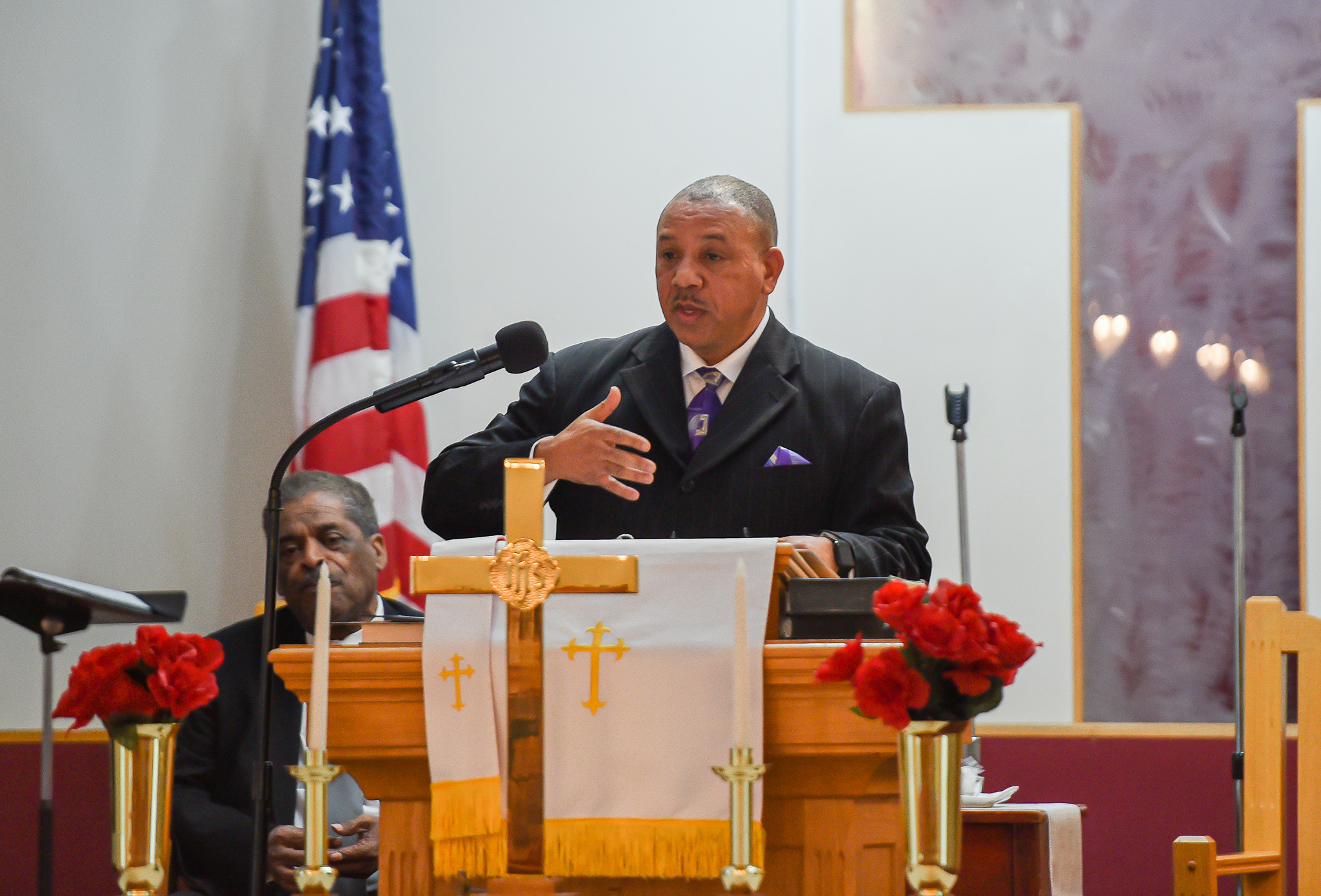MORGANTOWN — Olivia Tuel allowed that she may have been “just a little nervous,” Sunday afternoon at Morgantown’s Greater St. Paul African Methodist Episcopal Church.
That was when she strode to the microphone to read her essay on Ruby Bridges — the kid who became a civil rights activist just by showing up.
“Kid,” is the watch-word for this story. Make that, a watch-word for this story. There’s another. More on that.
Ms. Bridges was only 6 years old on Nov. 14, 1960, when she became the first black student to integrate an elementary school in the American South.
Ruby was going to enroll as a first-grader at William Franz Public School in New Orleans that day.
Provided she could physically get through the doors, that is.
A black-and-white photograph captured that exact moment.
It chronicles a little girl in a white dress and pigtails, who was towered over by the law officers there for her protection.
The image was stark and compelling, and made even more so when Norman Rockwell recreated it for a Look magazine cover in 1964.
Rockwell’s rendering was entitled, “The Problem We All Live With” — and it was.
Up to that point, his artistic calling card had come in the form of all those whimsical, nostalgic — and unabashedly wholesome — covers he turned out on a regular basis for The Saturday Evening Post.
This was a new, grim territory.
Goodbye, goofy dads, Christmas morning and kids on sleds with their beagle pups running alongside.
Hello, Bull Conner, bodies fished from the lake and attack dogs turned loose.
America’s civil rights conflict wasn’t just boiling. It was a fully engulfed, five-alarm blaze.
Fast-forward to 2020, when Olivia, a fourth-grader at Morgantown’s Suncrest Elementary, took the microphone at Greater St. Paul.
Ruby Bridges reached out her from beyond the Wikipedia page, she said.
“She was a kid. Just like me.”
Not there — not yet
Sunday was Greater St. Paul’s annual Martin Luther King observance.
Today is the national holiday honoring the memory of the clergyman and civil rights activist, who was gunned down in Memphis in 1968.
Olivia was part of the program, along with Demarcus Bandy, a Mountaineer Middle seventh-grader who also read an essay on the current state of race relations in America.
“We aren’t quite there yet,” he said.
That’s true, said Glenn Walker, a Greater St. Paul bishop.
However, he said, while Olivia and Demarcus are youngsters today, they are going to be adults tomorrow.
“And that’s how you put feet on the dream,” he said, referencing King’s famous (and largely adlibbed) “I have a dream” speech on the Washington mall in 1963.
Generations of youngsters in Morgantown who grew up in the pews at Greater St. Paul now bring their grandchildren to services there.
The tiny church with the red roof on Beechurst Avenue is 148 years old.
For the last 7,700 or so Sundays (give or take) Greater St. Paul AME has been a lighthouse, a rock and an oasis to the University City’s black community — and anyone else who felt compelled to walk through its doors — since that first service back on Nov. 13, 1871.
Through Jim Crow, Selma, the Watts riots, Martin Luther King, Bobby Kennedy, Barack Obama and Black Lives Matter, those doors have just always been open.
‘In case someone hasn’t told you for a while’
An open door means an open heart, the program’s keynote speaker Gregory Epps Sr. said.
Epps is a former collegiate athlete who worked as a teacher and coach on his way to earning his doctorate. He’s an administrator at WVU’s Robert C. Byrd Health Sciences Center.
Dr. King, he said, was about administrating to the social health of America and the world.
In 1964, when Ruby Bridges made the cover of Look, King had four years to live.
While King endured death threats daily, he still stayed on the beam, Epps said, speaking and preaching about affecting positive change through non-confrontation.
Non-confrontation, and — Epps said, marveling — unconditional love.
“In case someone hasn’t told you this for a while,” he said, “I want you to know I love you. I may not know you, but I love you.”
Love: The second watch-word for this story.




